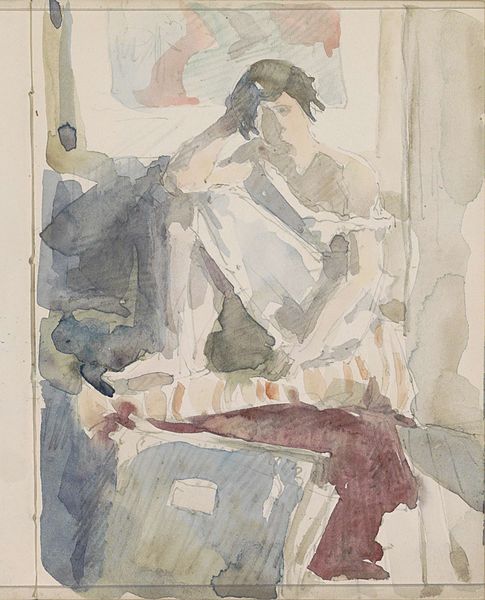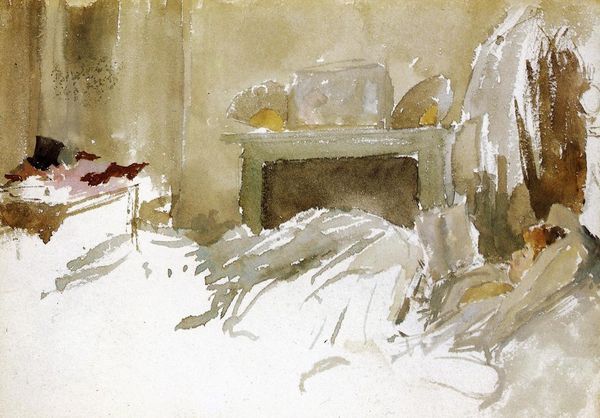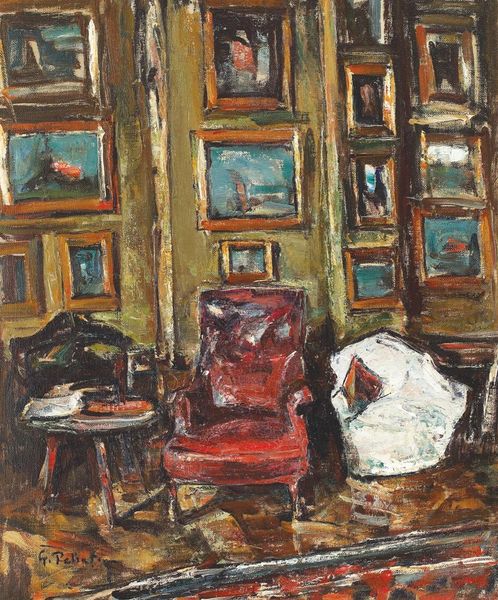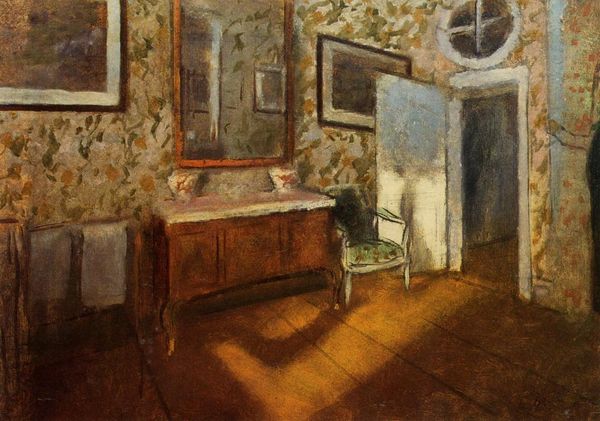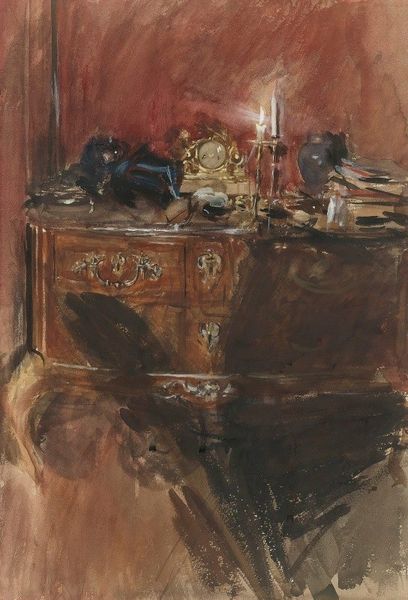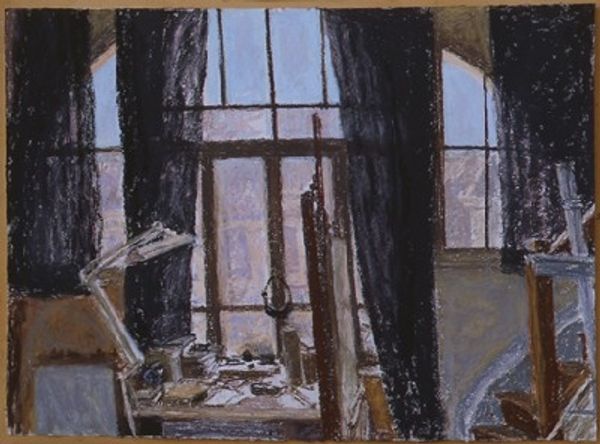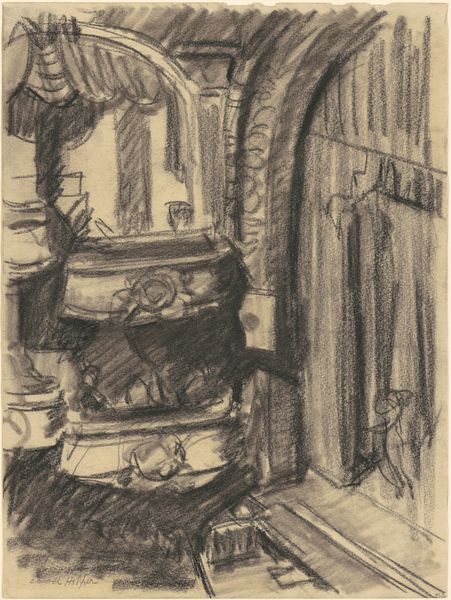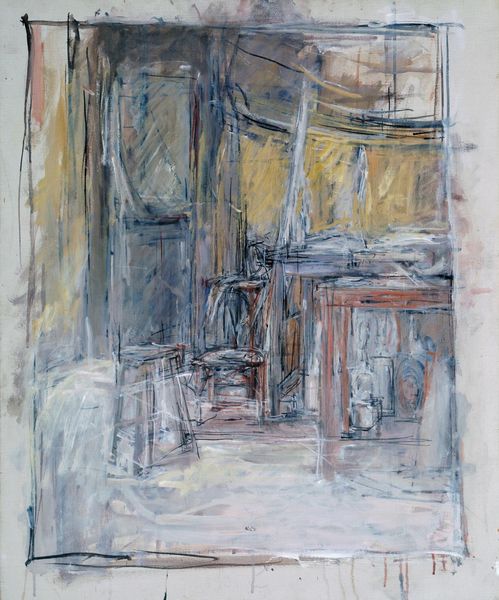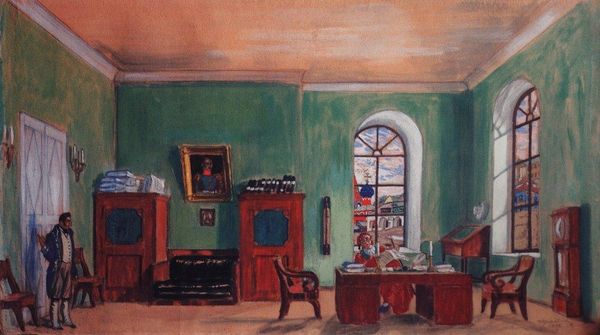
painting, watercolor
#
portrait
#
narrative-art
#
painting
#
figuration
#
oil painting
#
watercolor
#
momento-mori
#
expressionism
#
watercolour illustration
#
watercolor
Copyright: Public domain
Editor: This is “Death,” a watercolor and possibly oil painting by Jeanne Hébuterne from 1919. There's something ghostly and unresolved about the scene depicted... a figure at the doorway and another recumbent in the bed... What stands out to you? Curator: Considering Hébuterne's work within a materialist framework, the use of watercolor, a typically "domestic" or "feminine" medium, becomes significant. Its fluidity and translucence might mirror the fragility of life being represented. What sort of labor went into producing a painting like this, especially considering Hébuterne’s own precarious situation as Modigliani's partner? Editor: That's an interesting point, the precarity... what do you mean exactly? Curator: I mean the social context and material conditions. Her art production was inextricably linked to Modigliani's fame, and shadowed by her later suicide. So how does the medium, inexpensive and readily available, speak to issues of access and constraint faced by female artists at that time? And even the image itself: the materials evoke a transient state, paralleling Hébuterne's fleeting existence. Editor: So you're saying the very choice of watercolor hints at her limited resources and perhaps a sense of impermanence? Curator: Exactly! It's crucial to consider what’s *available* to an artist and *why* certain choices are made regarding materials. It reshapes how we understand its purpose. How might this affect our view of more celebrated works, typically oils or bronze? Editor: I see. Looking at the process and the means available opens up the interpretation... almost like another layer of narrative. It pushes the conversation away from simply death, and into the messy circumstances surrounding life and creation. Thank you for making it more clear!
Comments
No comments
Be the first to comment and join the conversation on the ultimate creative platform.
